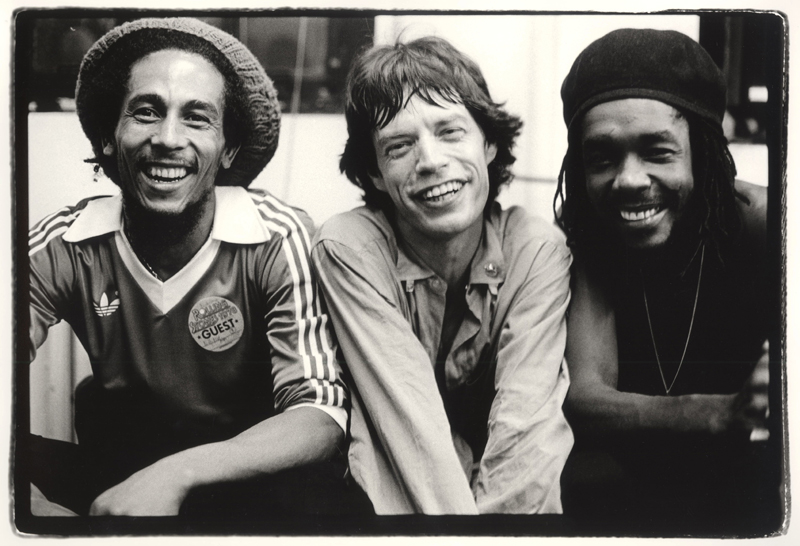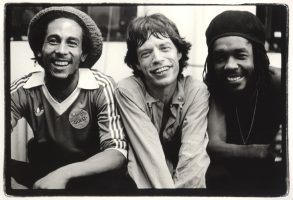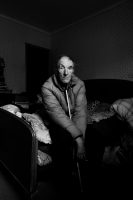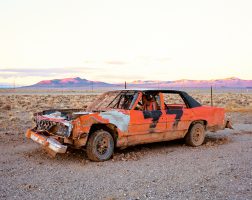
The award winning aCurator online magazine features high quality photographic projects from a diverse range of contributors, displayed in a full screen format. Its founder Julie Grahame has a long history of working with photographers as a consultant, online publisher, editor, portfolio reviewer and more. We took the opportunity to talk to her about aCurator, her work in the photographic industry, and ask her advice for emerging photographers…
Who are you?
I was born Julie Grahame in north London, in 1969. I had a good education but I wasn’t a particularly great or engaged student, and I wanted to start working at a relatively early age. Hard work and good fortune gave me the opportunity to move to New York in 1992 and I have been based there ever since. Lately, I consult; curate; write; edit; and handle all the licensing for the estate of Yousuf Karsh in North America.
Can you explain a little bit about aCurator and how you came to start it?
When I moved to NYC it was to run a photo agency. We specialized in music and celebrity, back in the days when image licensing was a really healthy business. One of the first adventures I had was a visit to the Time Life Picture Collection. I was so blown away by the depth of the subjects they had: file after file of one shoot with Liz Taylor I remember in particular, and I thought it was such a shame that so few magazines were publishing really big spreads any more. I felt I wanted to publish a magazine that featured several images from a shoot rather than the three or four most mags were using. I never got around to it until the digital age made it easier.
And before that what was your experience with working with photographers?
At 16 I got a job working for Bonus Print, running a C41 lab on a high street. I had to assess every 35mm neg individually so I got a ton of experience looking at bad wedding photos! By the time I left the photo agency, in 2006, I had personally worked with around 400 photographers.
What was your very first job? And how did you get from your first job, to where you are now?
I stopped eating meat at 12, so I wisely took a job at Holland & Barrett as soon as I was allowed – I always say I was 14 but my Mum insists I was 15. I worked at a betting shop for a year – I’d forgotten about that! Then I took a photography course and by the time I was 20 I was desperate for a job in photography, but not as a photographer. I found myself begging Madame Tussauds for a gig shooting the tourists but I ended up with a job filing slides at a photo agency. I nearly quit on day one I hated it so much, cutting up 2 1/4 trannies, mounting, sleeving, and filing them. But, I wanted the money so I stayed. Within a year I was managing the London office; after two I was the director of the New York branch. We had a roaring time until 9/11/2001 forced us to be 100% digital, and while the tech was costing a fortune, license fees were dropping. By 2005 I’d had enough and in 2006 handed over the keys to new owners (I had become a shareholder in the company along the way). I had foresightedly married a web designer and he helped me start working online. I launched the aCurator blog first, and the full screen magazine soon after, in 2009.
What is your process for selecting artists for aCurator? Do you seek out items which appeal to you, or do you find that people are always approaching you with submissions – and if so how do you decide?
When I launched the magazine, it was with 10 features from photographers I knew well. I soon started to receive submissions on a daily basis. I attend portfolio reviews, judge competitions, speak to students – I’m always seeing new work. How do I decide? In a vacuum, feeling god-like. But seriously, if something touches me, alarms me, feels as if it needs telling, then there’s a good chance I’ll want to publish. I can then decide whether something works in the magazine, or makes more sense in the blog. You can see that there really is no theme to the features, I publish what I love. I am excited as I prep every one.
What advice would you give to photographers who want to submit their work for publication to blogs, magazines, etc? What mistakes do people make and what makes a piece of work stand out?
Everyone’s different, so seek out their submission guidelines. Don’t be upset or annoyed if you don’t hear back and don’t let that put you off trying again with different work. Online and offline of course are very different, so if you’re looking to drop off a book at a magazine, find out if they have a drop-off day. Always have a promo card on you, and please use a font size that grumpy old editors such as myself can read without adding to our crow’s feet. (Other pet peeves of mine include overly-designed websites with bad navigation and opaque portfolio titles, and photographers who don’t use their domain name for their email. Wouldn’t it look more professional if you are you@yourphoto.com than dorislikessloths@gmail?)
Sending unsolicited emails with large files is a no-no. You never need to send volumes of high-res images by email and definitely not unless you have been asked to. Again, submission guidelines will dictate how you go about submitting work but if in doubt, I suggest a short, friendly, PERSONAL note, saying why you sent it to this person – you love their magazine/roster/last feature – a short statement, with 5 or 6 low-res files, a link to a page on your website where I can see more. Personally, I want to get a view of you in as short a time as possible so attaching PDFs of your work that I have to open is irritating.
What makes a piece of work stand out is the quality of the work, what’s gone into it. I don’t care if you are a student or the most famous photographer in the world, if you shoot on your doorstep or travel to the wilds, just get close, and have something interesting to say. On a side note, I just finished judging a competition. I wish the contributors could see everyone else’s submissions and see how similar so many of them are. Mostly, the mundane stays mundane even if you take a photograph of it; desolate hillsides get tiresome; blurry photos of people in the back seats of cars… these are all things I see over and over again. They almost always have nothing to say.
Run us through your average working week.
My week consists of much juggling. I work on Karsh every day – there is always something to do, whether it’s filling research requests, writing up or red-lining license agreements, or doing some maintenance of the digital files. I usually have a photo editing gig to work on. Most weeks I meet a photographer or two either for consulting or pleasure, and try to go see an exhibition. I try to hive off looking at incoming submissions to one or two days a week but usually fail and they distract me from everything else! I prep a feature every two weeks, and post in the blog when I have time and inclination. I’m trying to do more book reviews but it’s time consuming. I also blog for the Huffington Post, which I do to promote some of my favourite photographers and to promote myself. I speak to students quite regularly, too. At the moment I am working the other side of the licensing fence clearing images for a book about a Boston photographer working in the late 1800s / early 1900s.
You do Portfolio Reviews and consult for photographers – what is your philosophy and how do you approach the delicate subject of critiquing someone's art?
Although my mates would say I am as subtle as a sledge-hammer, I think I am also honest, fair and kind as I can be in all my meetings with photographers. My philosophy is to impart as much wisdom as I can. If it’s a consult, I expect the photographer to be fairly specific about their goals for hiring me (eg they need to re-think their website or social media presence, or need help editing and sequencing. I get quite a lot of “should I even continue this project?”)
For portfolio reviews, I think it’s OK to just want feedback. As a reviewer, you’re inevitably going to see work you think is mediocre, or actively dislike. I hear horror stories from photographers about how they’ve been spoken to; I hate to imagine a reviewer being all negative, or patronizing. So if I actively dislike something, I won’t say so, but I will challenge the photographer on the work. If I think it’s technically incompetent, I might say so. If it’s a really bad idea, I’ll probably make that known. On a few occasions I have found someone to be defensive about their work – just don’t! Photographers with a bad attitude are the worst. Also, top tip: make notes during reviews, and be sure to ask if you can keep in touch with new work. Bother to follow-up when you get home. These things matter.
Is there a person who inspires you?
I can’t choose one person. My first real inspiration was Michael Putland, my mentor at the photo agency he founded, and a fantastic, super-hard working photographer who put his trust in me. I have to name two other photographers. One is Jim Mortram, a documentary photographer who is telling the stories of the marginalized people who live around him, in a beautiful, moving and important way. He has helped not only show how their lives really are in the most non-judgmental way, but is a friend and activist.
The second is a fellow ex-pat here in NY, Rob Hann. Rob was an editorial photographer I worked with whose jobs dried up over the course of the last ten years, as so many have experienced. Long story short, since 2010 you can find Rob in Soho most of the year with a trestle table, and a display of matted prints of his fabulous photos of the American Midwest. As a consequence of getting over his sense of what an “artist” is, he’s paying his bills, meeting people from all walks of life, and was even signed by a fine art gallery. You can read an interview I did with him here.
What are you planning next?
I am going to be splitting my time between New York and London, so I’m hoping to get more involved with the photography scene in the UK. I want to attend some of the great-looking photo festivals that are springing up in Europe. Generally, I hope to consult with more photographers both in the States and in Europe.
You can find out more about Julie Grahame at her website, and follow aCurator for regular updates.
Is there someone that you’d really like to see us interview on Shutter Hub? Drop us a line and let us know!





